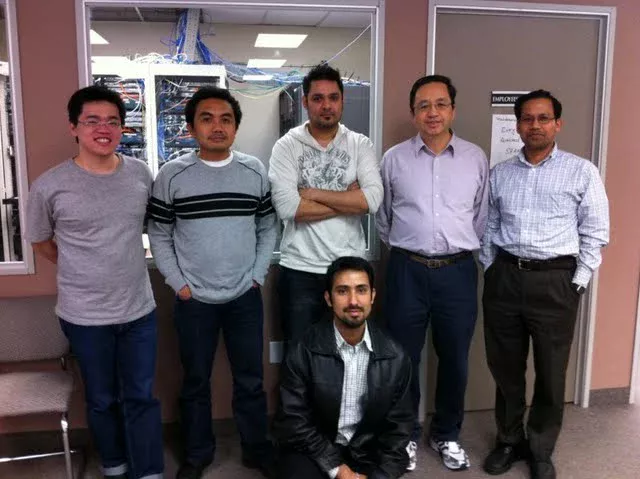- Tel: +1-866-777-0060
- Request For Information
Cisco CCNA Training
Implementing and Administering Cisco Solutions v2.2
The Implementing and Administering Cisco Solutions v2.2 Boot Camp course provides a broad range of fundamental knowledge for all IT careers. Through a combination of lecture and hands-on labs, you will learn how to install, operate, configure, and verify a basic IPv4 and IPv6 network. The course covers configuring network components such as switches, routers, and Wireless LAN Controllers; managing network devices; and identifying basic security threats. Network programmability, automation, and software-defined networking are also covered at a foundational level.
What is included:
- 5-day intensive instructor-led Online Training
- Dual CCIE certified instructor
- 2-year retake policy
- 80 Hours of Lab Access
- Available in-person or on-site as well
Course Fee $2,995

Schedules
| Course | Course Date | Course End Date | Location | Individual Price | Register |
|---|---|---|---|---|---|
| Cisco CCNA Training 200-301 | 02-23-2026 9:30 am | 02-27-2026 5:30 pm | Online (Live) – Las Vegas | $2,995.99 | |
| Cisco CCNA Training 200-301 | 04-06-2026 9:30 am | 04-10-2026 5:30 pm | Online (Live) – Toronto | $2,995.99 | |
| Cisco CCNA Training 200-301 | 05-25-2026 9:30 am | 05-29-2026 5:30 pm | Online (Live) – Las Vegas | $2,995.99 | |
| Cisco CCNA Training 200-301 | 07-06-2026 9:30 am | 07-10-2026 5:30 pm | Online (Live) – Toronto | $2,995.99 | |
| Cisco CCNA Training 200-301 | 08-24-2026 9:30 am | 08-28-2026 5:30 pm | Online (Live) – Las Vegas | $2,995.99 |
- 1
- 2
- Identify the components of a computer network and describe their basic characteristics
- Understand the model of host-to-host communication
- Describe the features and functions of the Cisco Internetwork Operating System (IOS®) software
- Describe LANs and the role of switches within LANs
- Describe Ethernet as the network access layer of TCP/IP and describe the operation of switches
- Install a switch and perform the initial configuration
- Describe the TCP/IP Internet layer, IPv4, its addressing scheme, and subnetting
- Describe the TCP/IP Transport layer and Application layer
- Explore functions of routing
- Implement basic configuration on a Cisco router
- Explain host-to-host communications across switches and routers
- Identify and resolve common switched network issues and common problems associated with IPv4 addressing
- Describe IPv6 main features and addresses, and configure and verify basic IPv6 connectivity
- Describe the operation, benefits, and limitations of static routing
- Describe, implement, and verify virtual local area networks (VLANs) and trunks
- Describe the application and configuration of inter-VLAN routing
- Explain the basics of dynamic routing protocols and describe components and terms of Open Shortest Path First (OSPF)
- Explain how Spanning Tree Protocol (STP) and Rapid Spanning Tree Protocol (RSTP) work
- Configure link aggregation using EtherChannel
- Describe the purpose of Layer 3 redundancy protocols
- Describe basic WAN and VPN concepts
- Describe the operation of access control lists (ACLs) and their applications in the network
- Configure Internet access using Dynamic Host Configuration Protocol (DHCP) clients and explain and configure network address translation (NAT) on Cisco routers
- Describe basic quality of service (QoS) concepts
- Describe the concepts of wireless networks, which types of wireless networks can be built, and how to use Wireless LAN Controllers (WLCs)
- Describe network and device architectures and introduce virtualization
- Explain Software-Defined Networks
- Configure basic IOS system monitoring tools
- Describe the management of Cisco devices
- Describe the current security threat landscape
- Describe threat defense technologies
- Implement a basic security configuration of the device management plane
- Implement basic steps to harden network devices
- Discuss the need of network programmability in Enterprise Networks, common programmability protocols, and configuration management tools.
- Introducing AI and ML in Network Operations
F.A.Q
1. What is the Cisco CCNA course about?
The Cisco Certified Network Associate (CCNA) course provides foundational knowledge and skills required to install, configure, operate, and troubleshoot small to medium-sized networks. It covers topics such as network access, IP connectivity, IP services, security fundamentals, and automation.
2. Who should take this course?
This course is ideal for:
- Aspiring network engineers or system administrators
- IT professionals seeking Cisco certification
- Students pursuing a career in networking or cloud technologies
It’s also a strong first step toward advanced certifications like CCNP or CCIE.
3. Are there any prerequisites for CCNA training?
There are no formal prerequisites for the CCNA exam. However, it’s recommended that participants have:
- Basic computer literacy and Internet usage knowledge
- A general understanding of network fundamentals (optional but helpful)
4. What topics are covered in this training?
Key topics include:
- Networking fundamentals (IPv4/IPv6, subnetting, OSI model)
- LAN switching, VLANs, and trunking
- IP routing and static/dynamic protocols (RIP, OSPF)
- Network security, ACLs, and VPN basics
- Wireless fundamentals
- Automation and programmability (REST APIs, Cisco DNA Center overview)
5. What certification does this course prepare me for?
This course prepares you for the Cisco 200-301 CCNA certification exam, which validates your ability to manage and optimize modern enterprise networks. Passing this exam earns you the Cisco Certified Network Associate (CCNA) credential, recognized globally by employers.
